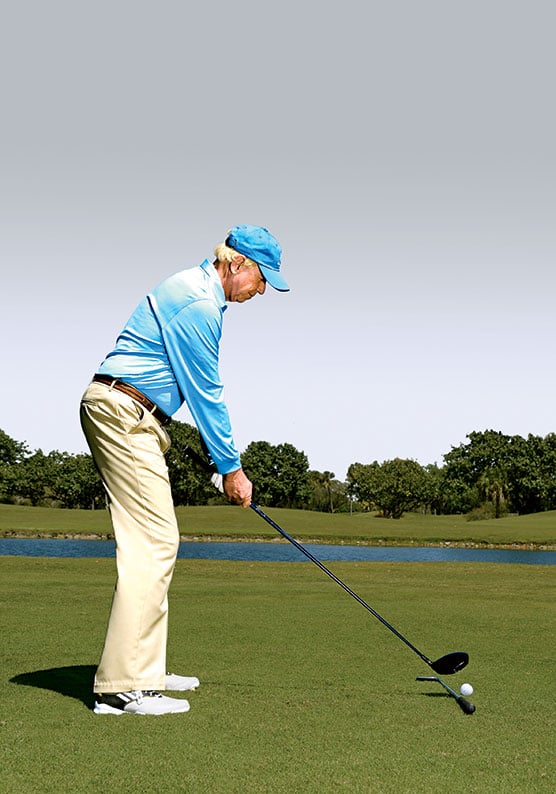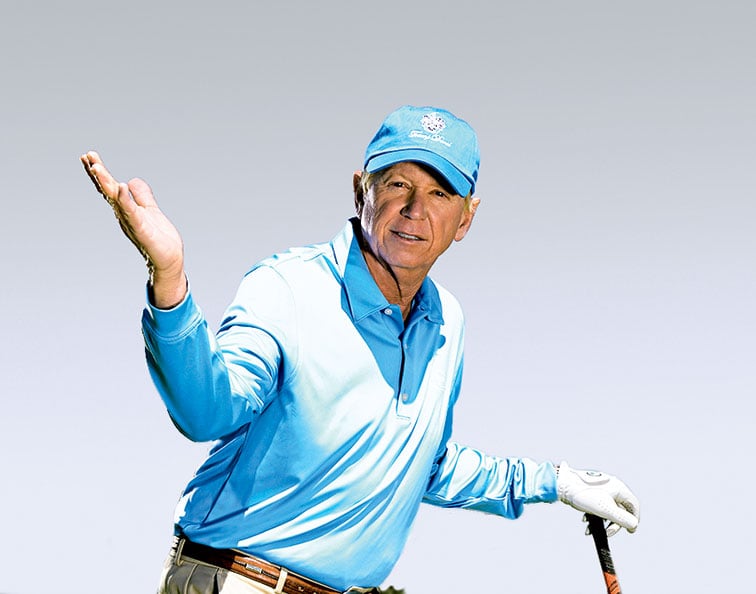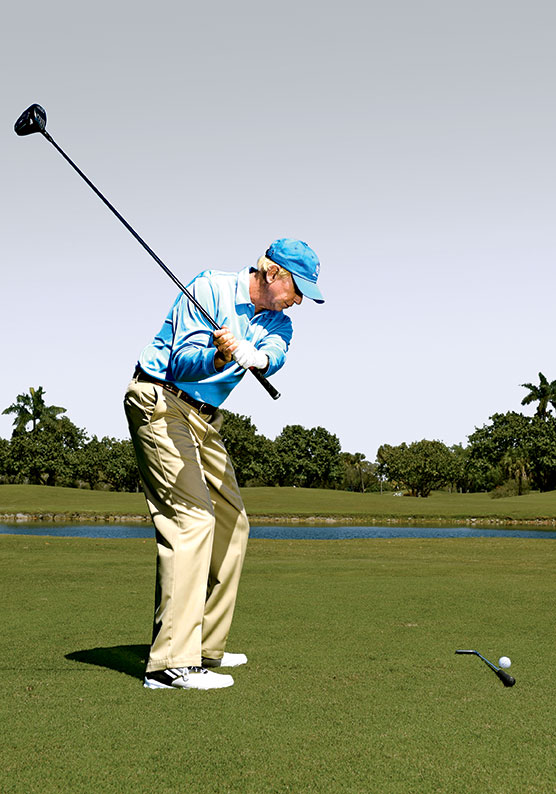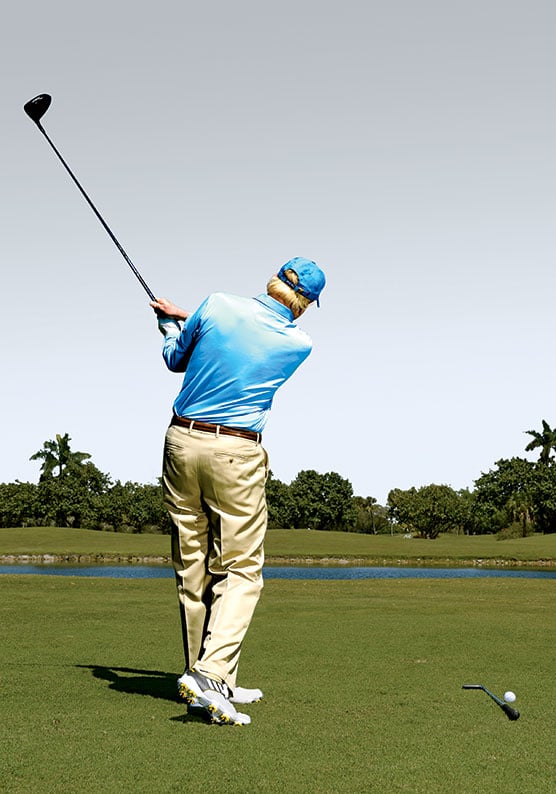I’ve been teaching golf for 40 years, and I’ve seen a lot of concepts for learning the game come and go. One that has stayed constant in my teaching is the theme of 45 degrees. I use 45 degrees to describe several of the positions found in a good, repeatable swing. It’s an angle that’s easy to visualise and remember. We all have an inherent sense for the horizontal and the vertical, and directly in between is golf’s magic number: 45. I’m going to demonstrate some important 45s. I’m choking down on my driver in these photos because the angle is easier to show (and get into) if you shorten the club. Why use a driver? It’s the only club that sits at a 45-degree angle to the ground at address [below], so that’s where our study of the 45s will start. There are many more of them, and when used correctly, they’ll get you hitting the ball consistently better.
— with Roger Schiffman

Starting Back
Push The Hands Out
Let’s take a closer look at the address position [above]. Set up with a mirror or large window to your right and look at your reflection. This is a beautiful picture to keep in mind as you get into the setup. If your hands are too low or you stand too far from the ball, the angle of the shaft will be less than 45 degrees. If your hands are too high or you stand too close, the angle will be more than 45. To get it right, bend forward from your hips (not your waist) and keep your back relatively straight.

Here’s our second 45, this one in the backswing: Take the club back about three-quarters, and check your right forearm. It should be at a 45-degree angle to your torso [above]. If you achieve this position, you’re keeping your hands the proper distance from your body. You’re not picking the club up steeply. This is what it means to make a wide arc, and it promotes speed and consistent ball-striking.

To The Top
Load The Right Wrist
When you stop at that three-quarter position, look at the right wrist. Notice it loads vertically and horizontally, which sets it at 45 degrees to the ground [above]. This hinging also controls the angle of the left wrist, which mirrors the clubface. A flat left wrist means a square clubface. A bowed left wrist closes the face, but a little bow is OK. What you don’t want is an open face, which happens if the right wrist is too vertical – not at the full 45.
Practise loading the right wrist without a club and with your palm open. Check it in a mirror. Focus on the palm somewhat facing the sky. Get it right, and the clubface will be perfect.

Coming Down
Keep The Club In The Slot
To begin the downswing, the clubshaft should continue moving along the 45-degree angle you established at address. This allows the clubhead to approach impact from the inside for a square hit [above]. Starting down with your lower body, rather than your hands and arms, helps keep the club in this inside slot, but the biggest factor is maintaining the 45-degree angle in the right wrist that you set going back. If the wrist flattens on the downswing, the club gets too steep – a major cause of the slice. So as your knees stay flexed and your right elbow tucks in close to your side, keep that right wrist bent back.
Another benefit of the right wrist staying bent is clubhead lag, which happens when the hands lead the club into impact and the clubhead “lags” behind. That move stores energy to unleash at the ball. Keeping your arms and wrists relaxed – never stiff – also helps with lag. Without it, you give up one of the swing’s huge power levers.

At Impact
Don’t Flatten The Wrist
By now you’re getting tired of me talking about the right wrist, but it’s the one thing I want to make sure you take from this article. That 45-degree backward bend that you set going back and retained coming down has to be there at impact, as the right arm straightens to the ball [above]. Because that wrist angle keeps the hands ahead of the clubhead, it’s what gives you that in-to-out draw swing with the driver and a downward strike with the irons.
That said, it doesn’t come naturally to a lot of people. So practise holding that 45-degree angle whenever you can – watching TV, walking the dog. It’ll soon become second nature.

Going Through
Let The Left Wrist Cup
At three-quarters into the follow-through, the right wrist should finally be flat and the left wrist should be cupped 45 degrees [left]. It’s a mirror image of the backswing, where we first talked about the right wrist.
In addition, the angle of the right foot should be 45 degrees to the ground. This ensures that the pressure is in your front leg as you go through the swing. Jason Day and Gary Woodland have talked about rolling off the inside of the back foot as they swing through the ball, which helps keep the clubhead on the correct inside path to impact.
Because there’s no ground contact using a choked-up driver, you can feel the flow of a pure swinging motion. But also make practice swings that stop at this three-quarter position to see if the left wrist is cupped and the right foot is angled at 45. If so, you’ll know your arms and body have done a lot right.
– Jim McLean runs the Jim McLean Golf Schools, based at Trump National Doral in Miami and at eight locations worldwide.

